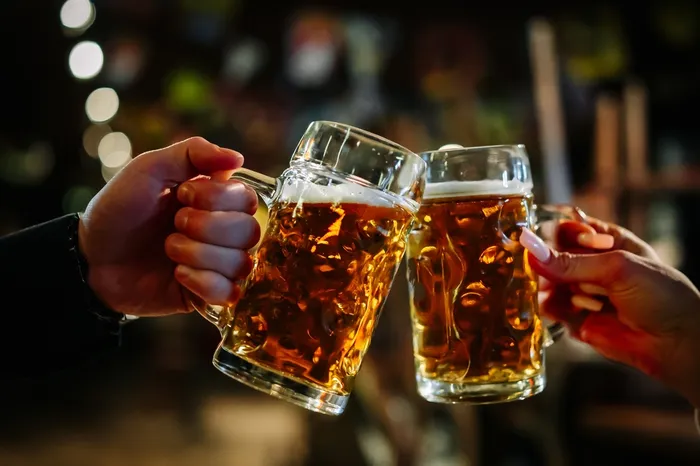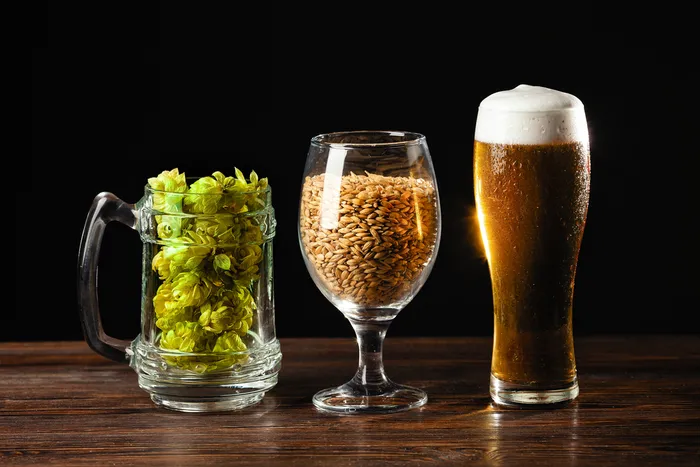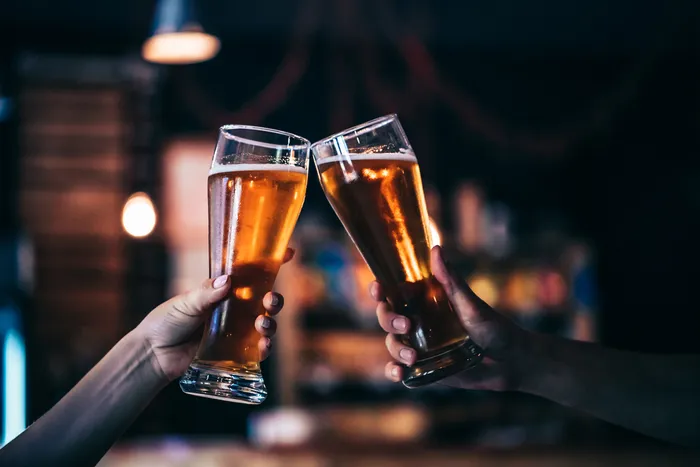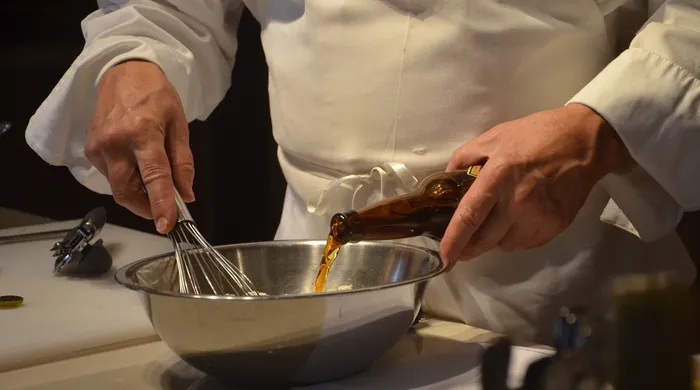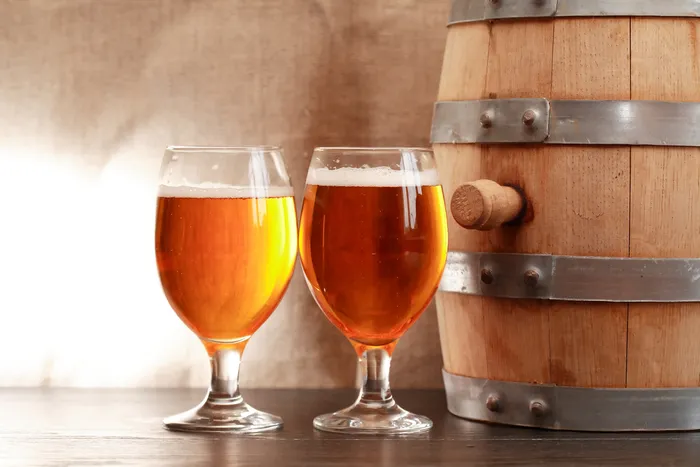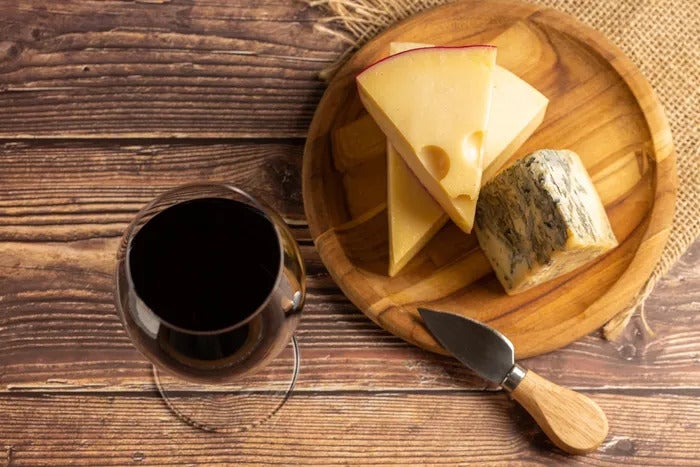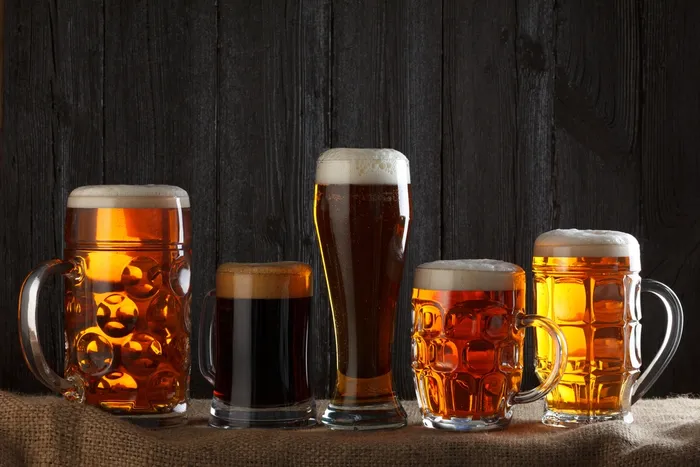There are no results that match your search.
Beer • 6 min • 09.08.2023
Beer & Food Pairing: Tasty Matches for Every Plate & Palate

Beer and food pairing can be an exciting, if not challenging, adventure in taste and aroma. The practice has gained more attention recently as craft beer continues to rise in popularity worldwide. Our understanding of the perfect marriage between food and beer owes much to the wisdom of experienced brewers and tasters, who, over the years, have developed a nuanced approach to these pairings.
Guided by the insights of Marty Nachel—founder of Nachel Beer Education, certified beer judge and esteemed author of "Beer for Dummies" and "Homebrewing for Dummies"— we'll demystify the process of how to pair beer with food, providing you with the knowledge to enhance your culinary experiences.
Understanding the Four 'C's
The world of beer and food pairing revolves around four key principles—cutting, calming, contrasting, and complementing. Each principle is a unique approach to balancing the flavours of the food with those of beer.
Let's explore each 'C' in depth with illustrative examples.
Cutting
Cutting is about using the flavour profile of a beer to slice through the heaviness of certain foods. For instance, the fattiness of lamb chops can be cut through effectively with a hoppy beer like an IPA or a pale ale. "It has more to do with the contents of the beer, not so much whether it's strong or not," Nachel explains. The bitterness and carbonation of these beers help cleanse the palate, readying it for another flavorful bite.
Calming
Picture yourself eating a bowl of five-alarm chilli, the heat tickling and perhaps tormenting your taste buds. To calm your palate, you need a beer that is rich and malty—a Belgian Dubbel, for example. The maltiness of this beer soothes the palate, offering a calming counterbalance to the spiciness.
Contrasting
Imagine indulging in a dish with a creamy, buttery sauce like Hollandaise. A contrasting beer for this would be a crisp one, possibly a Pilsner or a Munich Helles—these pale lagers, high in effervescence, offer a delightful contrast to the creaminess of the sauce.
Complementing
Complementing refers to pairing food with a beer that enhances its flavours. For example, a salad with a tangy vinaigrette dressing would be well complemented by an equally tangy beer, such as a Berliner Weisse or a Belgian Lambic.
Classic Pairings
Some pairings are classics, enjoyed by enthusiasts over the years. A quintessential pairing is oysters with stout, with certain brewers even producing oyster stout using oyster-infused water. Other classic pairings include Stilton cheese with barley wine and double IPA with carrot cake—the hoppy IPA cuts beautifully through the butteriness of the cake frosting.
Beer and Charcuterie
Beer and charcuterie board is an "obvious pairing choice," with the salty, charred flavours of the meat harmonizing perfectly with dark beers like Porters, stouts, or a German Rauchbier (smoke beer).
Cheese and Beer Pairing
The world of cheese and beer pairing is vast, with many winning combinations. Mascarpone pairs beautifully with a fruit beer, while Colby cheese finds its match in a brown ale. Other pairings worth exploring include Chevre with wheat beer, Havarti with Pilsner, and Aged Gouda with dry stout.
Sweet Pairings
Pairing beer with sweet foods, particularly chocolate, yields surprisingly delicious results. Be it milk chocolate, dark chocolate, or bittersweet chocolate, dark beers like Munich Dunkel, Porter, Brown Ale, and different stout styles work exceptionally well.
Pairing Beer with Appetizers
Appetizers that you can eat with your fingers are perfect beer partners. Buffalo wings, chicken tenders, blooming onions, and jalapeno poppers are all examples of appetizers that go with beer. They pair well with light, refreshing, palate-cleansing brews like Pilsner.
Beer and Spicy Foods
Does beer help with spicy food? Absolutely. Beer can effectively counterbalance the spiciness, and beers that are rich, viscous, and malty can soothe the palate when dealing with spicy dishes. However, be cautious with bitter, sour, or higher-alcohol beers as they can accentuate the spiciness.
Mastering Your Own Beer and Food Pairings
The world of beer and food pairing is a veritable playground of tastes and aromas. While these guidelines can help you get started, the best way to discover your favourite combinations is to experiment. The key lies in understanding the principles of cutting, calming, contrasting, and complementing and applying these to your personal preferences. So, pick up your favourite beer and dish, and start exploring!









